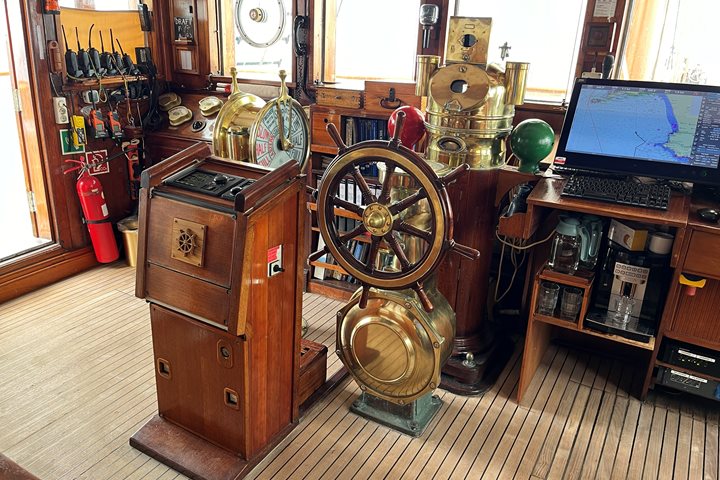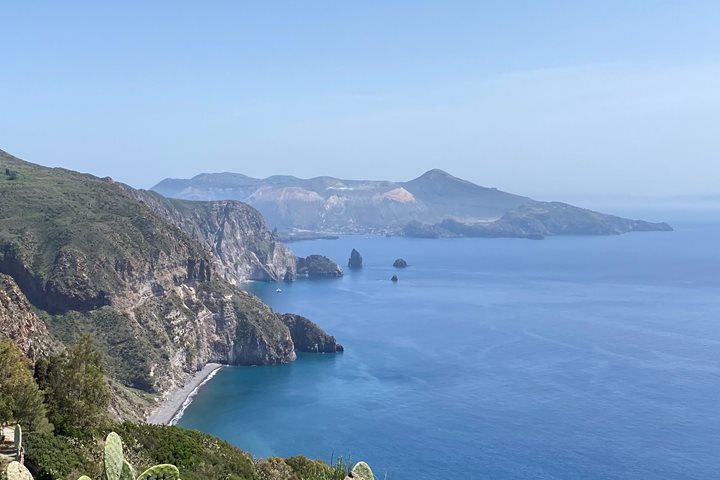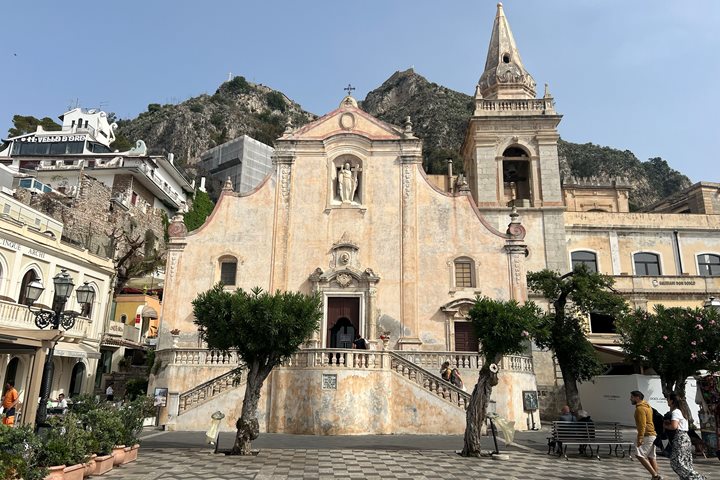The entrance to the great harbor in Malta is one of the grandest entrances of any harbor in the Mediterranean. We were all on the monkey deck by 6:00 a.m. as we motored into the grand harbor. The honey-colored limestone rock raises up from the sea; the great walls of Valletta grow organically out of the natural limestone. It is simply breathtaking. The fortifications were started in the 1550s by the Grand Master of the Order Jean Valletta after whom the capital city of Malta is named. We approached the great, massive Fort St. Elmo. The walls are laid out in a star shape for better defense.
We began our tour of Valletta from the newly designed center, where the gorgeous new Parliament building sits. The building was designed by Renzo Piano. Previously, this was a rather ugly and busy bus depot. We walked down the street filled with merchants. We passed a statue of Jean Valletta, the French noble who was also elected General of the Knights of St. John in 1557. The Order of Knights of St. John Hospitaller were divided into “languages,” and many countries (hence “languages”) contributed their nationals to the order. The knights lived monastic, priestly lives in “auberges,” or inns. Although they began as an order of nurses helping the wounded Christians trying to retake the Holy Land from the Muslims, they evolved into a fighting order of Christian nurse knights – a contradiction that is hard for moderns to understand. Our visit to the sumptuous Co-Cathedral of St. John was incredible. The floor is covered with 400 distinctive, colored marble tombstones, providing the names of the men interred with brief biographies written in Latin. If there is a square inch of this cathedral that is not either gilded or covered in jewels, I didn’t see it. Our next stop was to view the masterpieces of the great Renaissance Italian artist Caravaggio. The co-cathedral owns two of his most famous works, “The Beheading of St. John the Baptist” and “St. Jerome in his cell.” They are simply amongst the greatest works of the 17th century. We settled in for some free time and enjoyed café life in this active town. After a buffet lunch on Sea Cloud, we visited the medieval city of Mdina – an architectural gem. The elaborate bronze door knockers were spectacular, as were the narrow alleys and lanes. We returned to the ship for a lovely dinner on the lido deck. Paula, our Expedition Leader, treated us all to the local liqueur made from the prickly pear cactus – a local specialty. I led a night photographic tour, focusing on the grand harbor from the overlook of the gardens. Then off to bed and tomorrow, Gozo.







